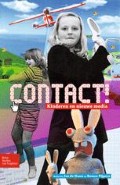Zusammenfassung
MSN en sociale netwerksites zoals Hyves lijken gemaakt voor jonge tieners. Hoe komt dat? In dit hoofdstuk proberen we antwoord te vinden op de vraag waarom jonge tieners, dat wil zeggen 10tot 13jarigen, zo massaal aangetrokken worden tot deze vormen van online communicatie. Daarna zullen we op basis van ons onderzoek van de afgelopen jaren een inschatting maken van de kansen en risico’s van online communicatietechnologieën voor deze leeftijdsgroep. Ten slotte geven we enige aanbevelingen voor beleid om de kansen van online communicatie voor deze leeftijdsgroep te maximaliseren en de risico’s te minimaliseren.
Access this chapter
Tax calculation will be finalised at checkout
Purchases are for personal use only
Preview
Unable to display preview. Download preview PDF.
NOTEN
1 Steinberg, L. (2008). Adolescence. Boston: McGraw Hill.
2 Valkenburg, P.M., & Peter, J. (2009). The effects of Instant Messaging on the quality of adolescents’ existing friendships: A longitudinal study. Journal of Communication, 59, 79–97.
3 Schouten, A.P., Valkenburg, P.M., & Peter, J. (2007). Precursors and Underlying Processes of Adolescents’ Online SelfDisclosure: Developing and Testing an “InternetAttributePerception” Model. Media Psychology, 10, 292–314.
4 Antheunis, M., Valkenburg, P.M., & Peter, J. (2007). Computermediated communication and interpersonal attraction: An experimental test of three explanatory hypotheses. CyberPsychology and Behavior, 10, 831–836.
5 Peter, J., Valkenburg, P.M., & Schouten, A.P. (2005). Developing a model of adolescents’ friendship formation on the Internet. CyberPsychology & Behavior, 8, 423–430.
6 Valkenburg & Peter (2009). Zie noot 2.
7 Valkenburg, P.M., Peter, J., & Schouten, A.P. (2006). Friend networking sites and their relationship to adolescents’ selfesteem and wellbeing. CyberPsychology & Behavior, 9, 584–590.
8 Valkenburg, P.M., & Peter, J. (2008). Adolescents’ identity experiments on the Internet: Consequences for social competence and selfconcept unity. Communication Research, 35, 208–231. [IF 1.48].
9 Bijv. Anteunis e.a. (2007). Zie noot 4; Valkenburg & Peter (2009). Zie noot 5.
10 Peter e.a. (2005). Zie noot 5.
11 Valkenburg & Peter (2009). Zie noot 2.
12 Valkenburg & Peter (2008). Zie noot 8.
13 Valkenburg & Peter (2008). Zie noot 8.
14 Van Den Eijnden, R. e.a., (2008). Online communication, compulsive Internet use, and psychosocial wellbeing among adolescents: A longitudinal study. Developmental Psychology, 44, 655–665.
15 Valkenburg, P.M., & Peter, J. (2009). Social consequences of the Internet for adolescents: A decade of Research. Current Directions in Psychological Science, 18, 1–5.
16 Peter, J., Valkenburg, P.M., & Schouten, A.P. (2006). Characteristics and motives of adolescents talking with strangers on the Internet. CyberPsychology & Behavior, 9, 526–530.
17 Steinberg, L. (2008). Zie noot 1.
18 Valkenburg, P.M., Schouten, A.P., & Peter, J. (2005). Adolescents’ Internetbased identity experiments: An exploratory survey. New Media and Society, 7, 383–402.
19 Duimel, M., & De Haan, J. (2007). Nieuwe Links in het gezin: de digitale leefwereld van tieners en de rol van hun ouders. Den Haag: Sociaal en Cultureel Planbureau.
20 Deze observatie komt voort uit het lidmaatschap van de eerste auteur van de wetenschapscommissie van het NICAM, waarin zij sinds 2001 co-verantwoordelijk is voor de ontwikkeling van Kijkwijzer.
21 Valkenburg, P.M. (2005). Schadelijke media en weerbare jeugd: een beleidsvisie 2005-2010. Amsterdam, Universiteit van Amsterdam. Rapport in opdracht van de door de toenmalige ministers van OCW en VWS ingestelde Commissie Jeugd, Geweld en Media.
Editor information
Rights and permissions
Copyright information
© 2010 Bohn Stafleu van Loghum, onderdeel van Springer Uitgeverij
About this chapter
Cite this chapter
Valkenburg, P., Peter, J. (2010). Online communiceren. In: de Haan, J., Pijpers, R. (eds) Contact!. Bohn Stafleu van Loghum, Houten. https://doi.org/10.1007/978-90-313-7838-8_5
Download citation
DOI: https://doi.org/10.1007/978-90-313-7838-8_5
Publisher Name: Bohn Stafleu van Loghum, Houten
Print ISBN: 978-90-313-7837-1
Online ISBN: 978-90-313-7838-8
eBook Packages: Dutch language eBook collection

